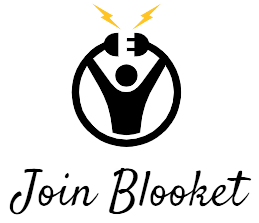HubSpot Features make it easy to track leads and turn them into happy customers. In addition to a comprehensive contact and company database, the system offers predictive lead scoring and sales pipeline management.
There are no walls or barriers to information with HubSpot CRM, so marketing, sales and customer success teams have access to the same information. This is crucial to smooth handoffs between teams and a seamless onboarding process for new clients.
How to Get Started
The first step in getting started with HubSpot CRM is to import your data. This includes any contacts you’ve got in other CRM systems, as well as any company information that you have in your databases.
Then you’re ready to use the sales tools in Hubspot, which will enable you to manage leads and track your progress towards reaching your goals. These include dashboard visual ticklers, ad-hoc and standard reports, and more.
In terms of the buyer’s journey, HubSpot classifies anyone who fills out a form on your website or sends you an email as a Lead. These are people who are aware of their pain and problem and are just beginning to investigate ways to solve it.
The Basics
HubSpot has a wide range of tools available for its clients. They include CRM, web analytics, content marketing, customer support and more. These tools can help businesses manage their leads, traffic, and sales.
One of the most important features of HubSpot is its client management tools. This feature allows managers to track the progress of their team members and manage them effectively. It also helps them make ad-hoc and standard reports accurately.
Another useful tool is its contact based workflows feature. This allows users to create and manage automated tasks that can be triggered by the sales pipeline status. This enables them to have an easier time tracking sales opportunities and improving their performance. It can even allow managers to make forecasts based on historical data.
The Funnel
Using HubSpot CRM, you can streamline your workflows and save your team time. This allows your teams to focus on generating more leads and increasing productivity.
The software’s lead scoring and lifecycle stages are designed to correlate with your marketing and sales journey. From when a prospect converts on your website and becomes a marketing qualified lead (MQL) to when they become a happy customer and share their positive experience with the world, you can keep your team on top of it all.
For example, you can use workflows to automate follow-up tasks or create an email for a new subscriber. You can also track metrics such as Customer Lifetime Value (CLV) and Acquisition Cost. This helps you determine the profitability of your subscription business model.
The Pipeline
Running a business is a constant juggling act. You have to generate new leads, convert warm leads into sales opportunities, serve existing customers, and manage cash flow.
HubSpot provides the tools your team needs to organize and streamline the process. With HubSpot CRM, you can create a custom pipeline that aligns with your sales process. You can also pin documents to the pipeline stages and set up automated tasks to run at specific points in the process.
You can edit the default views of the pipeline so that your team only sees the deals and opportunities you consider most important to your success. This makes it easier for them to track their progress and quotas. This is a great way to help them be more productive and grow your business.
The Reporting
The HubSpot CRM comes with built-in reporting tools that provide a clear overview of your marketing and sales performance. These are complemented with advanced data analytics and visualization functions in spreadsheets.
In addition, you can also analyze individual objects such as contacts, companies, deals, tickets, quotes, payments, activities, and line items. Funnel reports are also available to measure conversion rates between certain stages in a customer’s or deal’s pipeline.
The Sales Hub has enough tools to prevent leads from slipping through the cracks and ensure your team is following up on them. It also enables you to personalize your marketing campaigns. For example, you can track your customers’ behavior and preferences to understand which communication channels bring them more value and increase their loyalty.





